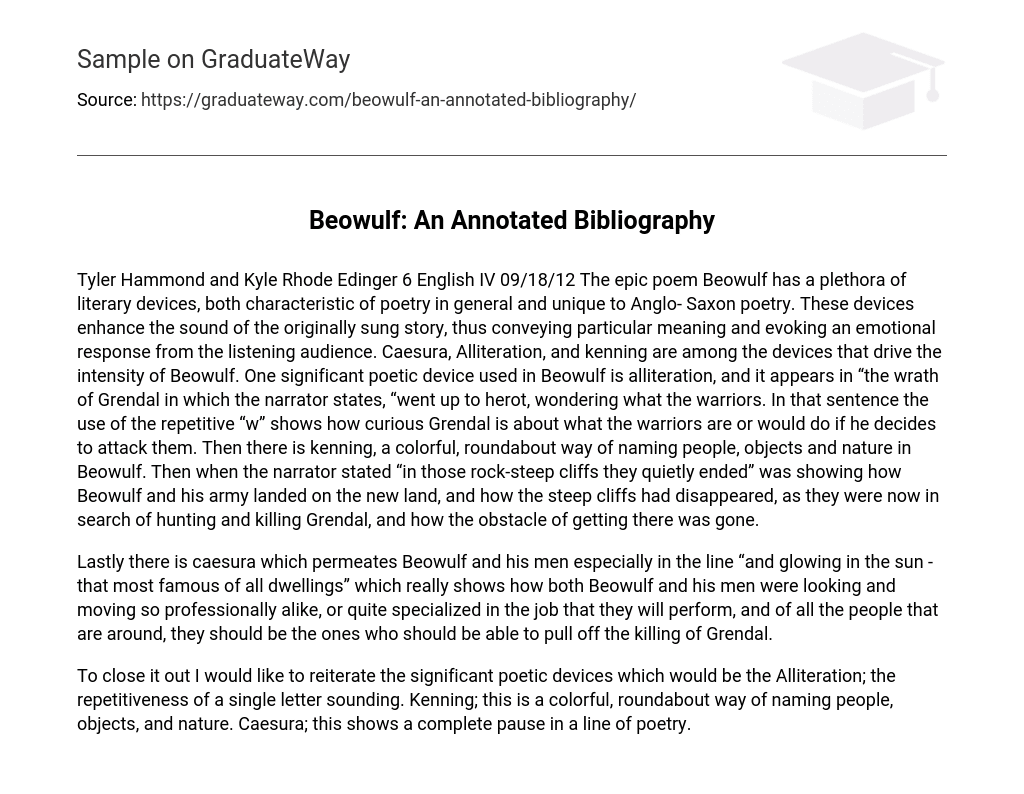The epic poem Beowulf contains numerous literary devices, which are both typical of poetry in general and specific to Anglo- Saxon poetry. These devices enhance the auditory experience of the originally sung story, thereby conveying specific significance and evoking an emotional reaction from the audience.
Caesura, Alliteration, and kenning are devices that heighten the intensity of Beowulf. One important poetic device employed in Beowulf is alliteration, which is evident in the line “the wrath of Grendal in which the narrator states, ‘went up to herot, wondering what the warriors.” In this sentence, the repetition of the letter “w” conveys Grendal’s curiosity regarding the actions the warriors would take if he were to attack them.
Kenning is a lively and indirect manner of naming individuals, items, and the natural world in Beowulf. The narrator’s mention of “in those rock-steep cliffs they quietly ended” illustrates Beowulf and his army’s arrival on unfamiliar land, where the once towering cliffs had vanished, freeing them to pursue their mission of hunting down and slaying Grendel.
The Caesura in Beowulf is visible in the line “and glowing in the sun – that most famous of all dwellings,” emphasizing the expertise and specialization of Beowulf and his men as they readied themselves to confront Grendal. Among those present, they were the most competent individuals suited for accomplishing the task effectively.
To conclude, I want to stress the significance of specific poetic elements: Alliteration, characterized by the repetition of a solitary letter sound; Kenning, an inventive and indirect means of naming individuals, objects, and nature; and Caesura, denoting a complete pause within a line of verse.





